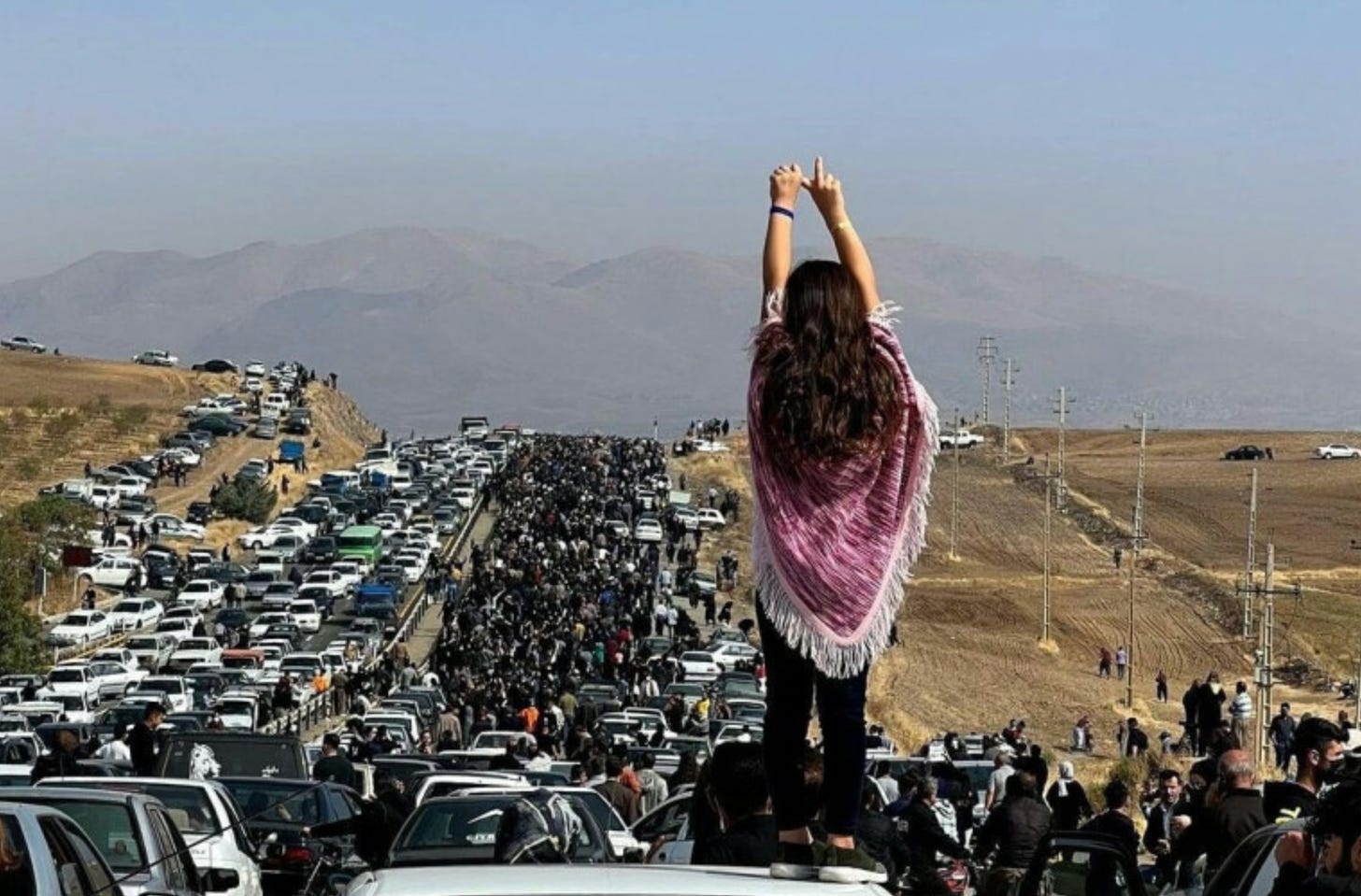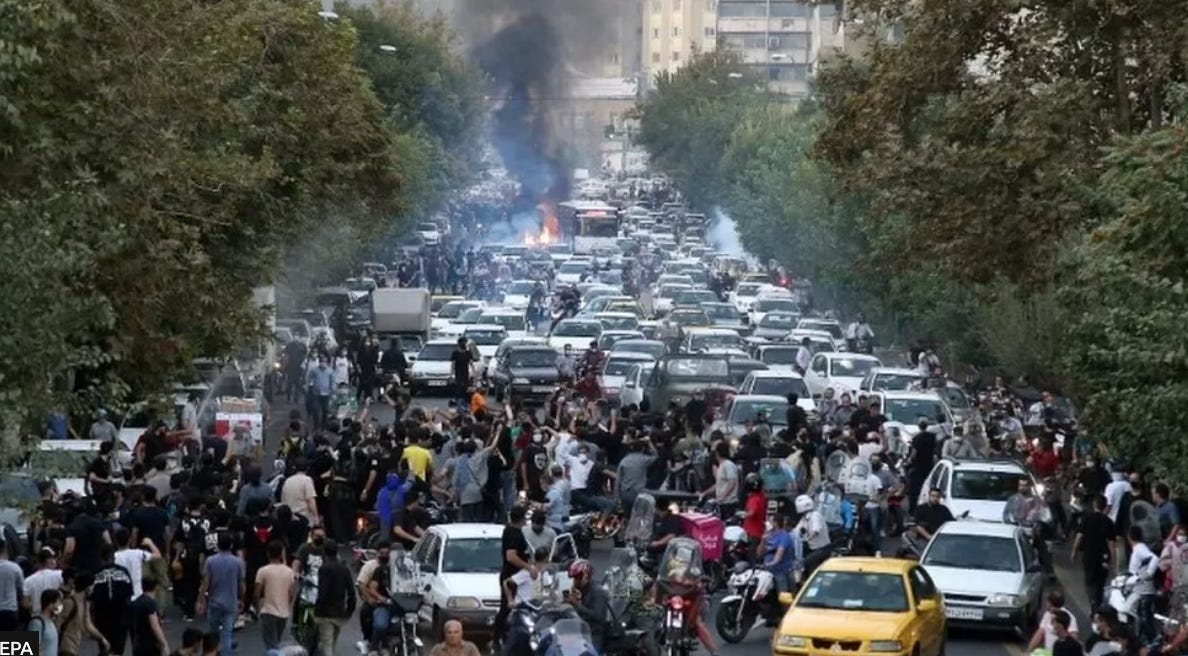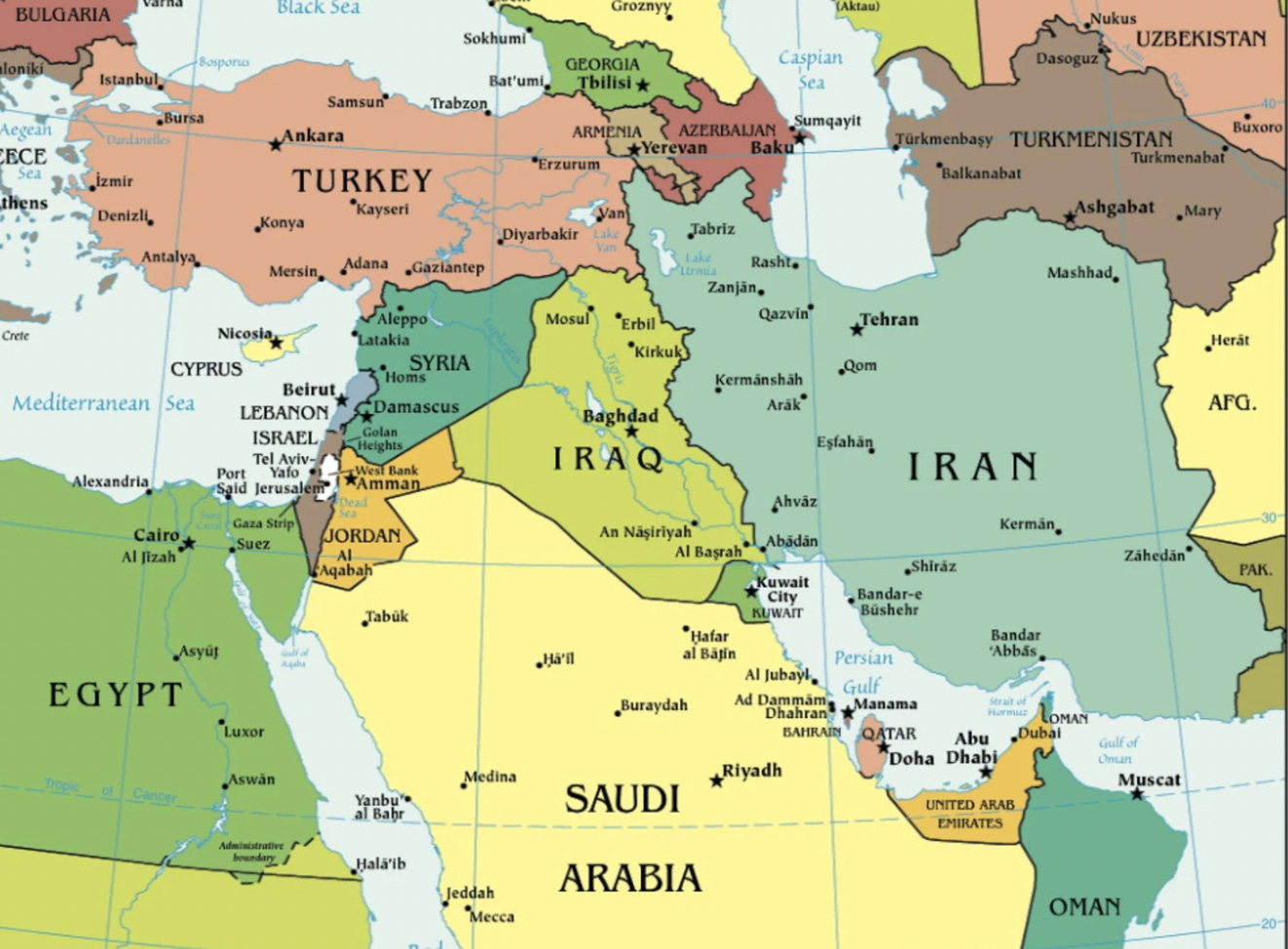Most females on the planet live dreadful existences due to patriarchal religions, cultures, societies, and governments. They are devalued, exploited, abused, or subjugated and the current struggle in Iran illustrates how difficult and dangerous equality is to achieve. What’s underway is an unprecedented and sweeping protest by Iran’s Generation Z females against a misogynistic theocracy in real-time. It is heroic and it is hopeless. This began just weeks ago, but it took nearly a century for the women’s suffrage movement to win in the West and required terrorist tactics as well as martyrdom to achieve. On September 15, Iran’s first martyr — 22-year-old Mahsa Amini — was murdered by police for the “crime” of wearing her hijab improperly. This triggered demonstrations which exploded last week when a 14-year-old school girl was beaten to death in front of her classmates by police who found a torn up a photo of Iran’s “Supreme Leader” in her school book. Now Iran is in turmoil.
The theocracy’s so-called “morality” police are now routinely ransacking schools across the country to harass and hunt for evidence of rebellion against the country’s Medieval edicts. The family of the girl beaten in her classroom, Parmis Hamnava, was ordered to keep the matter secret, but word spread, and last week trade labor unions began entering the fray by staging strikes alongside students and teachers. The unrest has caught the attention of the world’s media, and the United States and others have heaped more sanctions onto the regime. But such international leverage is limited, given that Iran is already economically isolated and a geopolitical pariah.
The Ayatollah blames his seething streets on Israel, the United States, and Saudi Arabia, not its own injustices. Last week, the military forces of all three countries went on high alert in the region given Iran’s accusations and terrorist track record. Interestingly, Saudi Arabia sought more American assistance to protect its oil fields because, in 2019, Iranian attacks dramatically reduced its oil production for months. Thus far, the carnage remains inside the country. Estimates are that 288 have been killed and 14,160 arrested, according to Human Rights Activists in Iran. And those charged are receiving lengthy jail terms or even death sentences.
The movement grows. Tens of thousands of students, male and female, have been expelled or suspended from their universities for participating or for not showing up for classes. Members of Iran’s large diaspora in the West have joined the cause with funds and by lobbying their adopted countries to help stop Tehran. Celebrities join the cause, some at great personal sacrifice. The latest victim was an Iranian celebrity chef, Mehrshad Shahidi, who was beaten to death the day before his 20th birthday by Iranian armed forces, according to Asian news service WION (World is One News). Enormous marches took place last week during his funeral in direct defiance of official orders to desist.
What’s happening across Iran represents one of the world’s largest female-led “revolutions” in history. Unfortunately, the two sides are irreconcilable: Iranian females are tired of oppression while the oppressors are tired of attempts by women to liberalize laws or bend their rules. The trigger this time is mandatory hijab requirements but these are the least of the grievances. Women in Iran are sexually exploited, harassed, segregated, jailed, fined, and flogged for minor crimes. They are denied economic and political opportunities and are discriminated against in family and inheritance laws. For instance, domestic violence is not a crime. Even murder, involving so-called honor killings, carry relatively light sentences. If a man murders a daughter, he is imprisoned for five years, but if he murders outside his family the punishment is execution.
Mass disruptions are nothing new to Iran. In 1979, its Shah was replaced as a result of street mobs as enormous as today’s. Unfortunately, these were organized by the Ayatollah and his zealots who then replaced the tyrannical monarchy with a religious dictatorship. Ever since, they have imposed constraints on the populace from dress codes to voting restrictions. Electoral fraud in 2009 resulted in the Green Movement which swelled then petered out as a result of a brutal crack down. Others followed in 2017 and 2018 as people marched or rioted over the high cost of living but these also ended as a result of institutional violence.
This year’s revolt began gradually as Generation Z (under 25s) bristled against the mandatory hijab rules and non-compliance spread. There were arrests and harassment, but the flashpoint was Amini’s murder in a police station without justification. The public reacted with anger and the official pushback was immediate. “The regime thinks if it loses the hijab, it loses its identity,” said an Iranian former lawmaker now based in the U.S. as executive director of the Nonviolent Initiative for Democracy, a non-profit. “They have tied it to their very existence, and then of course, if they relax it, they are going to collapse.”
Dissolution of this dictatorship is only a remote possibility at this point, but tyrannical governments have been known to suddenly collapse — as did the Shah’s in 1979 or the Soviet Union’s in 1991. In Iran, however, this will only happen if the movement persists, recruits females of all ages, and develops leaders who are ruthless, inspiring, and have a political agenda. The country’s females also need more support from Iranian men, establishment figures, and, if possible, a few enlightened or ambitious military officials. But even if that happens, the struggle will be lengthy because Iranians, after all, must stare down a terrorist government with nuclear ambitions that believes God is on its side. “It would be great if the protests toppled the ayatollahs and led to a better world,” wrote a columnist in The Jerusalem Post. “Despite heavy media coverage and excitement by Iran critics, there is almost zero chance of that happening, at least at this stage.”
For most Iranians, male or female, the ferment is an “old movie”. In the past, millions have marched but millions more have immigrated to Europe or America. Roughly 400,000 Iranians live in Los Angeles alone. However, on the other hand, Iran’s current conditions may yield success eventually. Its regime has been crippled with sanctions, its principal supporter, Russia, may be on the ropes, and the Ayatollah is as old as was the Shah when he was deposed. Another critical factor is that the regime has become so abusive, and so hated internationally, that increasing numbers of Iranians realize they may have no choice but to try and topple it. As one 31-year-old protester told a newspaper last week, this was not her first attempt to try and change Iran’s leadership, but she felt that this time was different. “It’s more serious because we don’t see any future for us. It’s not just about the scarf. It’s about the whole life they have built for us.”







What these women are doing is as amazing as it is courageous. My heart is with them, and one can only hope that they will ultimately succeed in toppling one of the most malign regimes in modern human history. If they do succeed, the positive effects across the region and the world will be widespread (a guy can dream, can't he?).
Great newsletter Diane. I hope the trade unions continue to join the protestors by staging strikes which may paralyze Iranian society. Otherwise, the authorities will try to brutally crush the resistance.
Let’s hope more Iranians join the protestors to overwhelm the government. Iranian women are being inspired by Ukraine.